What to Expect, How to Prepare, and What to Do After
When FDA investigators walk through your doors, the outcome depends less on the inspection itself and more on the daily discipline of your systems. This guide takes you inside the inspection process—from the knock at the door to the final follow-up letter—so you know what to expect, how to prepare, and how to respond with confidence.
Why the FDA Inspects
The FDA’s mission is to protect public health, and inspections are one of its sharpest tools. For food facilities, inspections typically fall into a few categories:
- Routine / Surveillance – scheduled on a risk-based cycle to confirm compliance with food safety regulations.
- For-Cause – triggered by a complaint, recall, outbreak, or other concern.
- Follow-Up – to confirm corrective actions after a previous inspection or enforcement action.
- Pre-Approval (for certain new facilities/products) – less common in food than in drugs, but sometimes applied to new manufacturing lines or novel ingredients.
Regardless of the type, every inspection is about the same fundamental question: Is this facility in a state of control that consistently protects consumers?
How Inspections Are Structured
FDA often organizes inspections around systems—functional areas that collectively determine food safety. In food, these commonly include:
- Quality / Food Safety System (always covered)
- Facilities and Equipment
- Materials / Ingredients
- Production and Process Controls
- Packaging and Labeling
- Laboratory or Testing Controls
A “full” inspection may cover several systems in depth, while an “abbreviated” inspection might focus on Quality and one other system if the facility has a strong history of compliance. Either way, the Quality system is mandatory.
What to Expect on Inspection Day
1. Arrival and Opening Meeting
- Investigators present federal credentials and issue a Notice of Inspection (Form FDA 482).
- The lead investigator outlines the scope and agenda.
- Establish a central meeting room to host the team and coordinate document requests.
2. Facility Tour
- Investigators tour the plant to see how operations align with written procedures.
- Expect scrutiny on sanitation, allergen controls, zoning (raw vs. ready-to-eat), packaging integrity, and employee practices.
- Investigators may take photos or samples; you should mirror everything they collect.
3. Records and Interviews
- FDA will request specific documents: food safety plans, sanitation logs, environmental monitoring results, training records, supplier approval files, and more.
- Employees may be interviewed. Staff should answer briefly and within their scope: what they do, how they do it, and how it’s recorded.
4. Daily Check-Ins
- It’s common for inspectors to hold short wrap-ups at the end of each day to summarize observations. This is your opportunity to correct small issues quickly.
5. Exit Meeting
- At the close, investigators summarize findings.
- If concerns exist, they may issue a Form FDA 483 (Inspectional Observations). This is not a final determination, but it lists issues FDA believes may violate regulations.
- Use the exit meeting to clarify what was observed and explain any immediate corrections.
What Investigators Are Looking For
The goal is evidence of control—or the lack of it. Common red flags include:
- Poorly trained or supervised staff.
- Inadequate or contaminated equipment.
- Inconsistent or missing process controls.
- Failure to investigate deviations, complaints, or product rejections.
- Weak allergen controls (mislabeling, cross-contact, undeclared ingredients).
- Sanitation lapses that allow pathogens to persist.
- Data integrity concerns: missing records, altered logs, or numbers that look “too good to be true.”
Investigators will also review complaint files, recall history, consumer reports, and any adverse events linked to your products.
How to Prepare Before FDA Arrives
1. Keep an “Inspection Kit”
Assemble a binder or digital folder with:
- Org chart and key contacts.
- Facility map and product/process flow diagram.
- Food Safety Plan (hazard analysis, preventive controls, verification, recall plan).
- Environmental monitoring and trend charts.
- Allergen control procedures and records.
- Sanitation SOPs with verification logs.
- Supplier approval and verification files.
- Complaint investigations and recall test results.
2. Define Roles
- Host: greets investigators, manages communication, sets daily huddles.
- Scribe: records every request, question, and document shared.
- Runner: retrieves documents, escorts inspectors, and alerts Host to issues.
3. Train Employees
- Teach frontline staff how to answer inspection questions.
- Reinforce “say what you do, do what you say”—procedures must match practice.
4. Conduct Mock Inspections
Bring in outside auditors or swap teams with sister sites to simulate the real thing. Practice allergen label checks, sanitation verifications, and even a timed mock recall.
5. Maintain a Culture of Readiness
The best preparation is day-to-day discipline. Keep records complete, legible, and timely. Treat every shift as if FDA could walk in tomorrow.
After the Inspection: Your Action Plan
Immediate Steps
- Contain any affected product or process tied to observations.
- Document what you corrected right away.
- Brief leadership with a fact-based summary.
Written Response
If you receive a Form 483, submit a written response within 15 business days. A strong response should include:
- Acknowledgment of the issue.
- Assessment of risk and product impact.
- Immediate corrective actions (with proof).
- Long-term corrective and preventive actions (with timelines).
- Verification plans to prove effectiveness.
Outcomes
FDA classifies inspections as:
- NAI (No Action Indicated) – no objectionable conditions.
- VAI (Voluntary Action Indicated) – issues noted, corrections expected.
- OAI (Official Action Indicated) – significant concerns that may trigger enforcement.
An Establishment Inspection Report (EIR) will follow. In some cases, FDA issues a Warning Letter or schedules a re-inspection. In others, you may receive a “close-out” letter once FDA is satisfied with your corrective actions.
Best Practices That Set You Apart
- Mirror every photo, sample, and document FDA takes.
- Fix issues fast, then complete root cause analysis and long-term CAPA.
- Keep trend charts ready to show proactive monitoring.
- Run annual mock recalls and record how quickly you can generate consignee lists and notifications.
- Update and test your Food Defense Plan for intentional adulteration risks.
- Audit your supplier program—importers especially should ensure Foreign Supplier Verification Programs (FSVP) are airtight.
Final Word
FDA inspections are not surprises—they’re opportunities to demonstrate the strength of your food safety systems. If your facility is disciplined daily, inspection day simply becomes proof of your culture. Walk in ready, engage with professionalism, respond with evidence, and you’ll not only pass the inspection—you’ll strengthen consumer trust in your brand.
References & Key Agency Resources
- FDA “What should I expect during an inspection?” (notice of inspection, escorting, basics).
- Inspection Basics and risk‑based purpose of inspections.
- Form FDA 482 (Notice of Inspection).
- FDA 483 (what it is) + 15‑business‑day response expectation.
- Remote Regulatory Assessments (no 482/483 during RRA).
- FSVP inspections (Forms 482a/483a).
- EIR release & FOIA reading room.
- FSMA Preventive Controls—food safety plan and recall plan requirements.
- Food Defense (IA Rule) + tools.
Disclaimer: This article is for informational purposes only and does not constitute legal advice. For site‑specific policies (e.g., photography), consult counsel.



